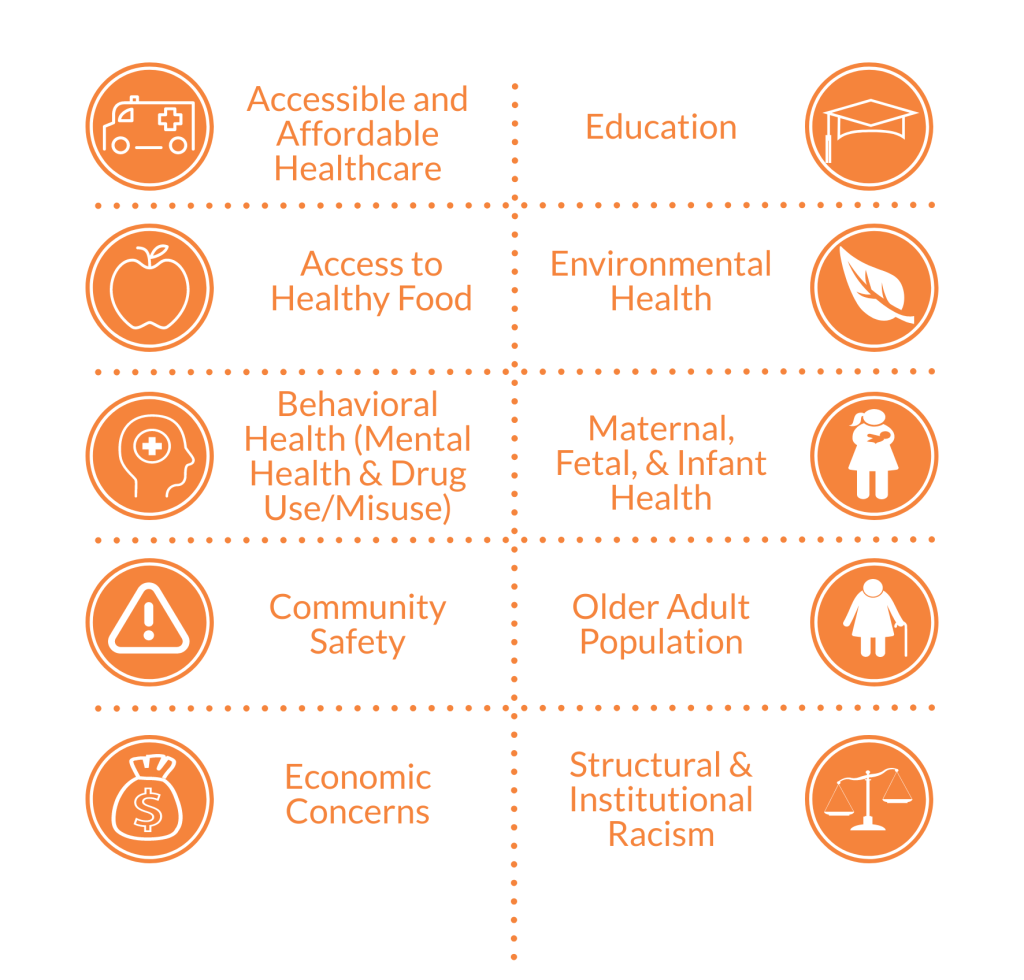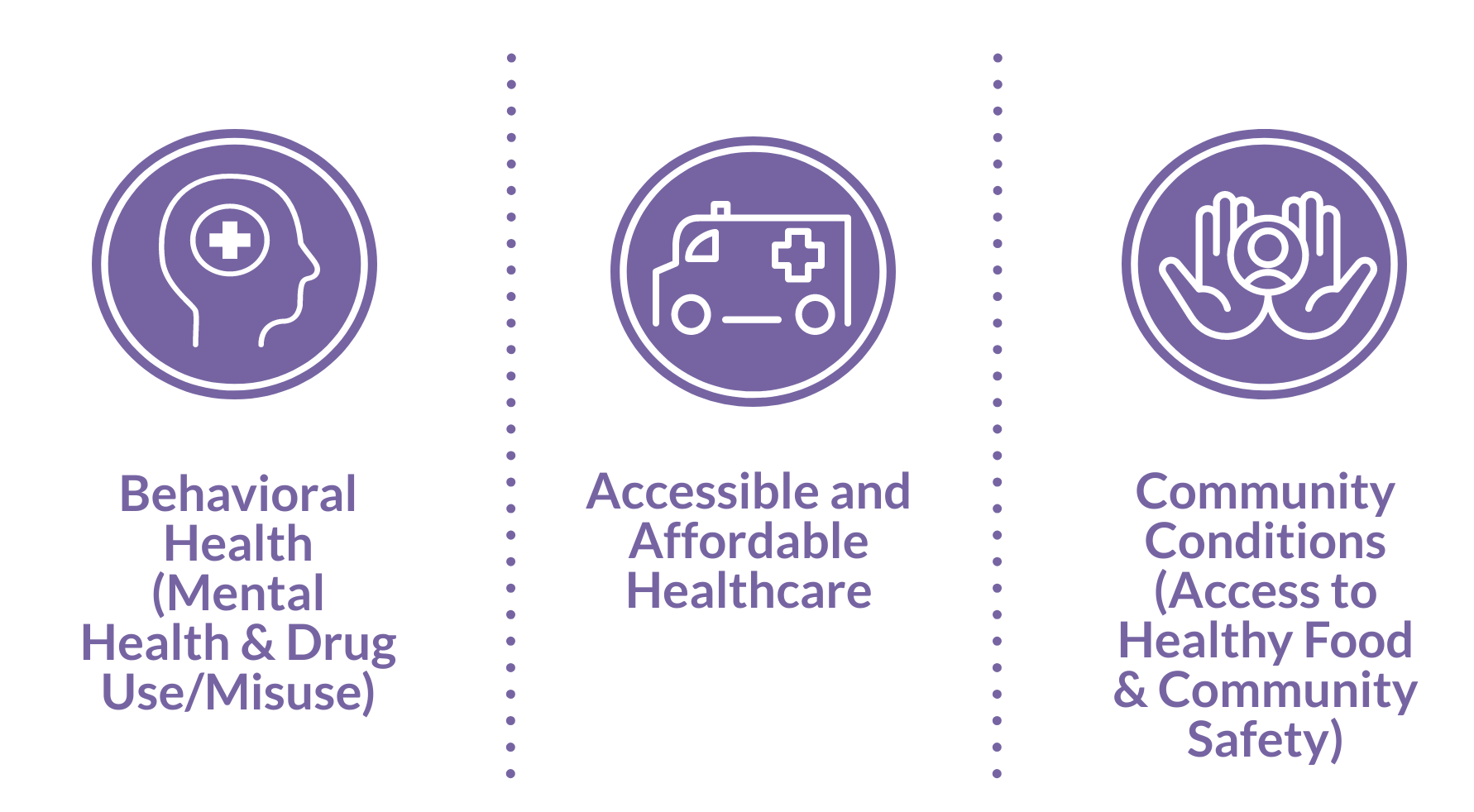2022 COMMUNITY HEALTH ASSESSMENT
A collaborative community health assessment gives all our community members and partners important data and information about the most pressing issues affecting the health of our County’s residents. Improving population health in Cuyahoga County is the shared responsibility of health care providers, public health agencies, local government, and other institutions, with community residents centered in all phases of the health improvement planning process.
Together is Better
HIP-Cuyahoga has a rich history of coordinated and collaborative community health assessments (CHA), initiated well before the state established the statutory requirement to align hospital and local health departments’ assessments on 3-year cycles by 2020. We have successfully moved from individual assessments to coordinated county-level assessments with shared priorities, aligned local and state-level strategies, coordinated advocacy, and collective accountability. This CHA will be used to collectively design a community health improvement plan (CHIP) and implementation strategy for the next three years. This plan will focus on evidence-based approaches to address the most pressing health issue for Cuyahoga County.
The 2022 community health assessment was conducted by the Cuyahoga County Community Health Needs Assessment (CHNA) Steering Committee, which consists of many long-standing partners including Case Western Reserve University – School of Medicine, Center for Health Affairs, Cleveland Clinic, Cleveland Department of Public Health, Cuyahoga County Board of Health, The MetroHealth System, Southwest General Health System, St. Vincent Charity Medical Center, University Hospitals and many other organizations.

Greater Collaboration for Health Improvement
The opportunity for all in Cuyahoga County to achieve their full health potential depends upon long-term collaboration among diverse individuals and organizations.
In Cuyahoga County We Know That:
The opportunities that we have in our communities affect our health and life expectancy. Opportunities to be healthy are not the same for everyone in Cuyahoga County. Despite ranking consistently in the top 10 in the state for clinical health care, our county ranks in the bottom third of all counties in Ohio for residents’ health. The conditions that shape health (commonly referred to as the social determinants of health) – such as financial resources, access to healthy food, and safe and affordable housing- are disproportionately spread across the county, resulting in significant differences in health outcomes and life expectancy.
We now know that differences in power, status, and access to opportunities are at the root of many of these barriers to healthy living. As a community, we have not yet achieved the system-level changes necessary to dismantle the policies and practices perpetuating poor health outcomes in our County.
LIMITED OPPORTUNITIES
Social Factors and Conditions That Shape Health
- Outdated policies and practices
- Trust
- Poverty
- Food insecurity
- Transportation
POOR HEALTH
Health Behaviors, Mental Health, and Health Outcomes
- Tobacco use
- Lack of physical activity
- Flu vaccination rates
- Cardiovascular disease
- Diabetes
- Childhood asthma
- Opioids
- Homicide/violence
- Lead poisoning
SHORTER LIVES
Mortality
- Infant mortality
- Life expectancy
- Mortality rates from disease
Top Health Needs 2022

Figure 1. Cuyahoga County Significant Health Needs

Figure 2. Cuyahoga County Prioritized Health Needs

